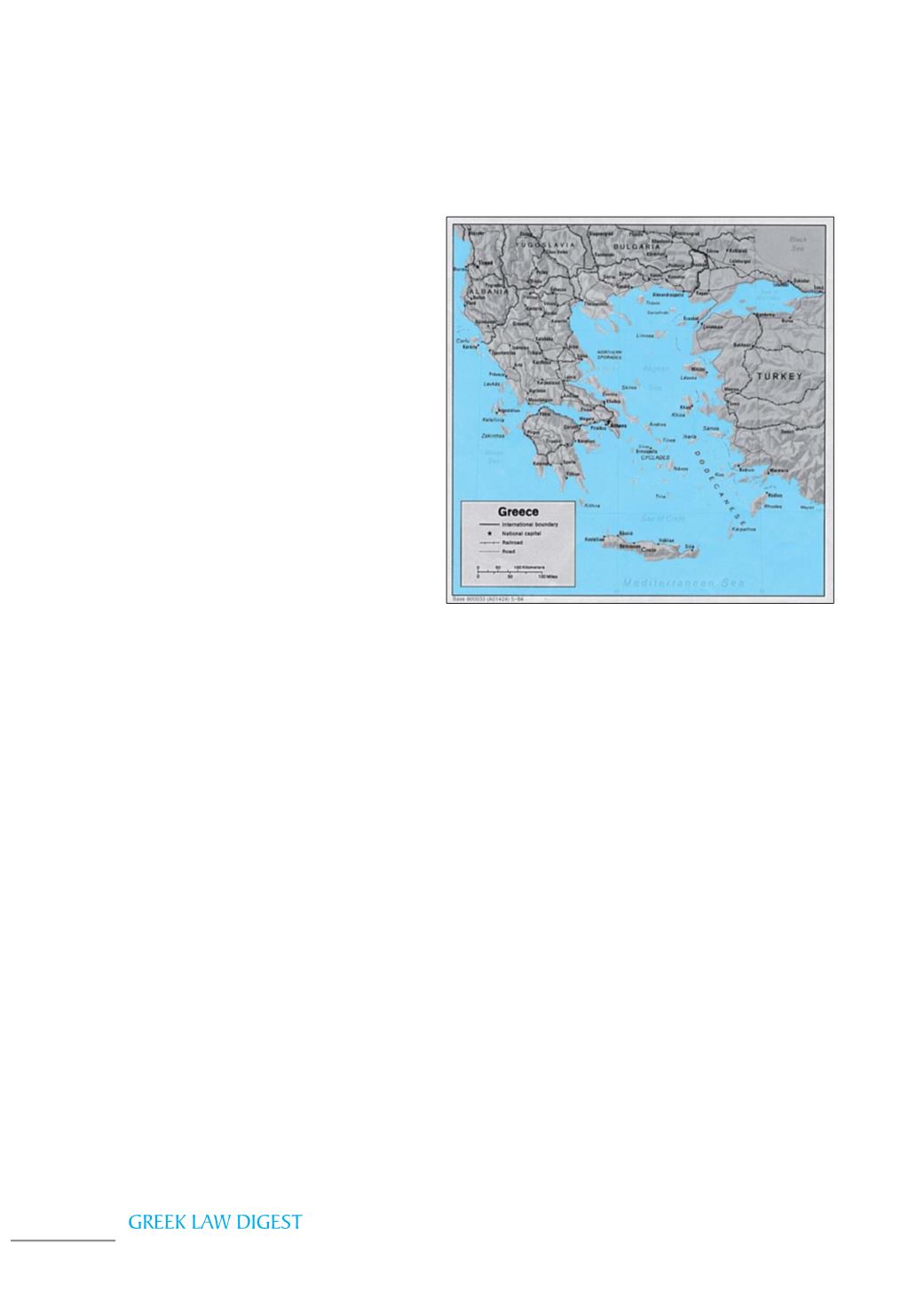

24
G R E E C E
GENERAL INFORMATION
Hellenic Republic (Greece)
Area:
131, 990 sq. km.
Length of state border:
1,228 km
Border Countries:
Albania (282 km),
Bulgaria (494 km), Turkey (206 km),
FYROM (246 km)
Climate:
Temperate, mild, wet win-
ters, hot and dry summers
Terrain:
Μostly mountains with
ranges extending into the sea as
peninsulas or chains of islands
Elevation extremes:
Lowest point:
Mediterranean Sea 0 m -Highest
point: Mount Olympus 2,917 m
Geographic importance:
Strategic location dominating the Aegean Sea and the south-
ern approach to the Dardanelles Straits, a peninsular country possessing an archipelago of
approximately 3,000 major islands
Natural resources:
Lignite, iron ore, bauxite, lead, zinc, nickel, magnesite, marble, salt
Time zone:
GMT +2
Official language:
Greek
Currency:
Euro
Capital:
Athens
Regime:
Presidential Parliamentary Rebuplic
Government type:
There is a unicameral Parliament consisting of 300 seats; Parliament
members are elected by direct popular vote to four-year terms. The Parliament elects the
President of the Republic who is the Head of the State. The government which determines
and applies the country’s general policy must enjoy the confidence of the Parliament.
Government consists of the Prime Minister and the Ministers.
The State functions are organised into three authorities:
the executive authority which is exercised by the Government,
the legislative authority which is vested in the Parliament and the President of the Hel-
lenic Republic. Laws are voted on by the Parliament and ratified by the President in
order to be enacted.









